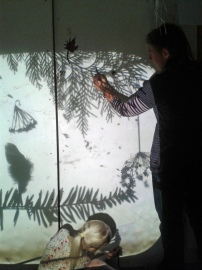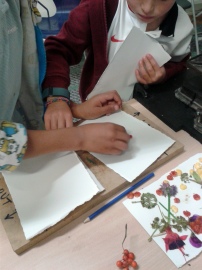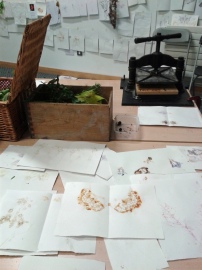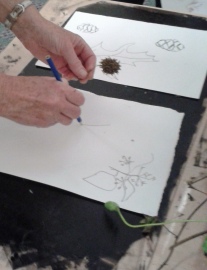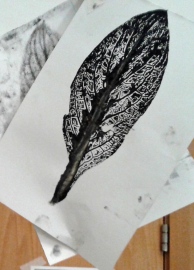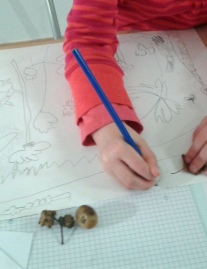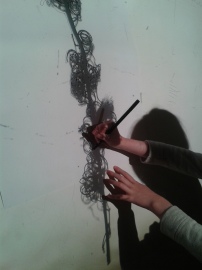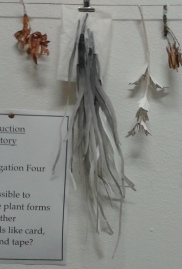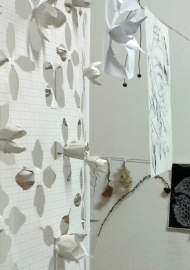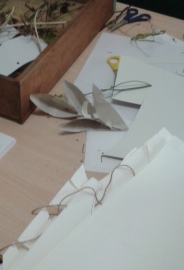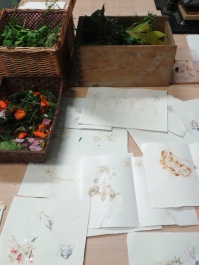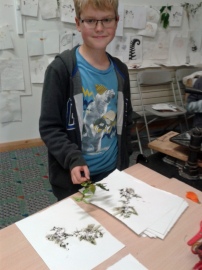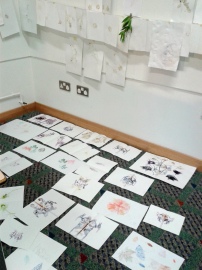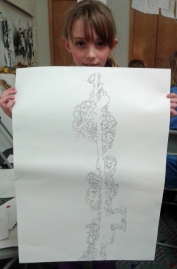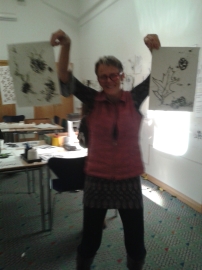Fellow SVA artist Alison Cockcroft and I have run many workshops independently and together, for all ages over the years – Alison has over 20 years teaching experience – but over the last couple of years our focus in these workshops has changed. We gradually became disenchanted with the standard model of creative workshops in which there is a set skill to be learnt, a set, measureable outcome and a restricted time allowed. These workshops seem to be most problematic with children, where the child’s parent or guardian has a strong expectation of the outcome (or of ‘something definite’ being achieved) and where the child’s sense of self and confidence often has yet to be strong enough to be at all philosophical about learning, outcomes and lack of comparison and competition. However it was also clear that this workshops structure can be equally problematic when teaching adults. We started seriously discussing the problems with and possible alternatives to ‘teaching art’ around 2013, and these discussions led to my ‘Wanderer’s Studio’ workshops in the Autumn of 2014.
This year Alison and I continued our research into art education, specifically drawing, which is something many adults and children are fearful of. Having to make a drawing look like the subject is the most common fear, and many insecurities surface. We became saddened by hearing ‘I can’t draw’… ‘I stopped drawing when I was a child’… ‘Oh drawing’s not for me’, and by seeing people backing away in horror from a pencil and paper. The workshops we are developing now are a direct response to this negative response to structured workshops in general and drawing in particular, and are in many ways very different to our other teaching. The set-up of the room is carefully planned to allow participants to enter casually and at their own pace, without necessarily having a formal introduction to the workshop. Information is presented to aid this, plentiful visual and textual guides placed throughout the space. The space becomes an immersive, interactive installation, set up with the familiar cues of a laboratory or workplace with subtle invitations to interact and alter the objects within it. There are no expected outcomes, only possibilities and a general guide to using the objects within.
The overt focus of the 2015 Big Draw workshop at the Museum in the Park, Stroud was that of plants and of drawing, linking also to the exhibition of work by Dail Benennah in the main gallery. But the underlying focus was on looking, on how we see objects and how we can see them differently (re-present them) through different processes loosely related to drawing.
As the workshops are drop in (and free), people can stay for as long as they want. Most stayed between one and three hours, with some coming back for more than one day. With no time constraints the atmosphere was relaxed but busy with people able to chose what area to engage with depending on their comfort zone and how busy the other areas were. For these workshops we set the room up with distinct areas including mono-printing with leaves, shadow drawing from the overhead projector, dry printing with oil pastels, direct prints from plants in the ‘crushing machine’, pen and ink drawing on various sorts of paper including graph paper, and constructing models of the plants out of card and wire. Supporting all of this was a variety of source material such as plant geometry, fractal geometry, electron microscope images and botanical drawings presented loosely to encourage material to be removed and added to, as if a rather disorganised scientist or botanist had simply pinned up information around the room!
The OHP shadow drawing was instantly playful with people being able to simply enjoy moving material around on the screen and seeing how different it looked when projected. What was surprising was the length of time most people spent drawing the shadows, it was noticeable that people lost their self consciousness (perhaps due in part to the dark area of the room) when tracing an outline. Many became lost in the intricate tracings and were delighted by the unselfconscious results.
The ‘crushing machine’ or plant crusher (an old book press used here in lieu of the less safe mangle) presented people with a basic action that was completely experimental and of all the activities was the furthest away from traditional drawing. In an almost pseudo-scientific manner, people became engrossed in working out which plants left a clear print, which had surprising coloured sap, which were too woody etc. The simple, joyous action of crushing something then uncovering the result, smelling the different plant smells and hearing the different sounds as stems flattened, berries popped and leaves crunched was compulsive!
The mono-printing table gave people the opportunity to make simpler prints directly from inked leaves or to draw onto the paper. Drawing in a non-precious way with messy materials and piles of paper to experiment on meant people could relax and enjoy the unpredictable but always satisfying results rather than compare ‘skill’ or ‘technique’ whilst drawing. Like the OHP and the plant crusher there was an element of surprise when the drawing/print was revealed.
More straightforward drawing materials were also provided but in the darkened area. In this intimate setting it was still surprising how many people settled down to draw. Using slightly unpredictable and temperamental tools like ink and dip pens reduced any desire for ‘perfection’ or accuracy.
The construction area encouraged people to look closely at the structure of the plants and to simplify and recreate using card, masking tape and wire, exploring the forms in 3D drawings. Prompts around the room asked ‘what happens when we remake one thing in a different material?’, ‘Do we see things more clearly when we have re-made them?’ and ‘How do we know what we are looking at?’.
The results were astonishing. Piles and piles of paper covered in prints, tracings, drawings built up over the workshops, filling the available wall space and the floor too. As people became more confident and adventurous more complex layering was achieved and a little control exerted to create ink-blot style plant prints.
Where will this series of workshops lead us now? What refinements can we make now? How much control do we have to have over the environment in order to help people feel able to lose control and experiment a little? Alison and I will be planning more workshops for the new year, watch this space!
Many thanks to the Museum in the Park for hosting this workshop and to the wonderful staff who carried on the workshop throughout the half-term holiday.

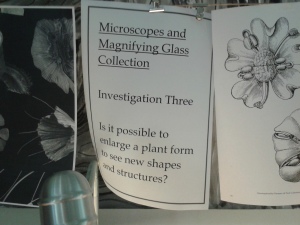

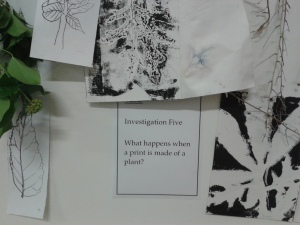
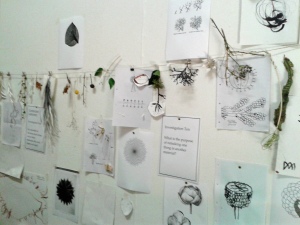
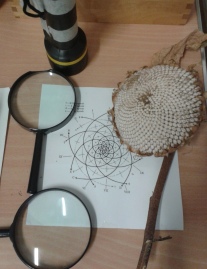
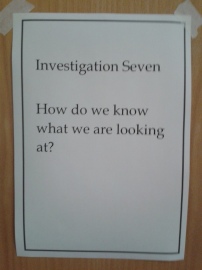
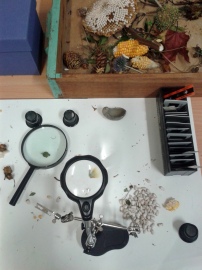

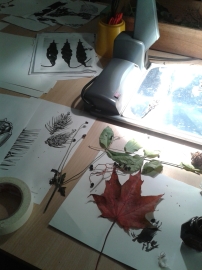
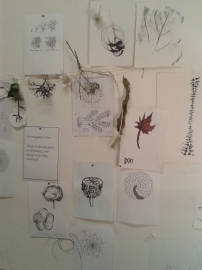

![23]](https://ceramicsculptureclass.files.wordpress.com/2015/10/23.jpg?w=203&h=270)
